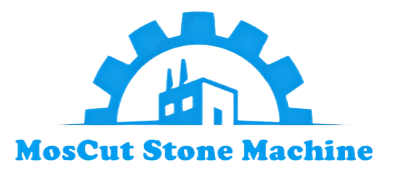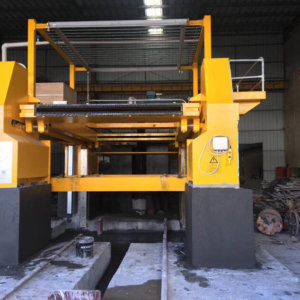In this article you will see the following sections:
1. What is marble engraving machine
2. How to buy a marble engraving machine
3. Machine Features
4. Applications of marble engraving machine
5. Specifications of marble engraving machine
What is marble engraving machine
A marble engraving machine is a type of CNC (Computer Numerical Control) machine that is specifically designed for engraving, etching, or carving designs into marble and other types of stone. These machines can range from small desktop units to large industrial machines and operate using a variety of tools, such as diamond-tipped cutters, to precisely cut or engrave intricate patterns and text into the stone surface.
Marble engraving machines are often used for creating decorative elements, signs, headstones, and other custom stonework. They can be controlled by specialized software that allows designers to create detailed patterns or text that the machine will then replicate on the marble surface. The precision of these machines enables the creation of highly detailed and complex designs that would be very difficult to achieve by hand.



How to buy a marble engraving machine
When considering the purchase of a marble engraving machine, customers should take into account several important factors to ensure they select the right equipment for their needs:
- 1. Material Compatibility: Ensure that the machine is capable of handling various types of stone materials, including marble, granite, limestone, etc., if you plan to work with a variety of stones.
- 2. Machine Size and Work Area: Consider the size of the machine and the work area it provides. The machine should be large enough to accommodate the size of the materials you plan to engrave.
- 3. Spindle Power: The spindle is the part of the machine that does the actual engraving. A more powerful spindle can engrave tougher materials and can operate at higher speeds without wearing out too quickly.
- 4. Tooling and Consumables: Check what kind of tools the machine uses for engraving and what’s readily available. Diamond-tipped tools are common for stone engraving due to their hardness and durability.
- 5. Precision: Look for machines that offer high precision and accuracy in engraving, which is especially important for detailed work and fine designs.
- 6. Software Compatibility: Ensure that the software provided with the machine is user-friendly and compatible with your design software. Some machines come with proprietary software, while others can work with standard CAD (Computer-Aided Design) formats.
- 7. Cooling System: Engraving stone generates a lot of heat and can cause wear on the tools. A good cooling system, such as a water mist or flood coolant, can prolong tool life and improve cut quality.
- 8. Dust Management: Stone engraving generates dust, which can be harmful to both the operator and the machine. A good dust collection system is important to maintain a clean work environment and protect the machine components.
- 9. Speed and Efficiency: Evaluate the speed of the machine, as this will directly affect production throughput. Faster machines can complete work more quickly but may be more expensive.
- 10. Durability and Build Quality: High-quality construction will ensure that the machine withstands the rigors of stone engraving over time.
- 11. Technical Support and Warranty: Good technical support can be invaluable. Check if the manufacturer offers prompt and helpful service. Also, look at the warranty terms for the machine.
- 12. Cost: Consider not only the initial cost of the machine but also the long-term operating costs, including power consumption, tooling, maintenance, and potential downtime.
- 13. Safety Features: Safety should always be a priority. Look for features like emergency stop buttons, safety shields, and other protective measures.
- 14. Training and Installation: Find out if the supplier provides training on how to use the machine and if they offer installation services.
By carefully considering these factors, customers can select a marble engraving machine that meets their specific requirements and budget constraints, ensuring a good return on investment.



Machine Features
The features of marble engraving machines can vary depending on the specific model and manufacturer, but here are some common features you might expect to find:
- 1. CNC Control: Most marble engraving machines are controlled by CNC systems, allowing for precise and repeatable movements based on digital designs.
- 2. Spindle Motor: A high-powered motor that drives the cutting or engraving tool. The power of the spindle motor can affect the machine’s ability to cut through harder materials and the speed of operation.
- 3. Engraving Tools: These machines typically use diamond-tipped engraving tools that are durable enough to etch into stone.
- 4. Working Table: A sturdy table that holds the marble in place during the engraving process. Some tables include clamps or other holding mechanisms.
- 5. Dust and Water Management: To manage the dust from stone engraving, these machines may be equipped with water sprays or dust extraction systems to keep the working area clean and cool the cutting tools.
- 6. Cooling System: Engraving stone generates heat, which can damage tools. Many machines have a built-in cooling system to mitigate this.
- 7. Depth Control: Precision depth control for engraving at different levels into the material, which is crucial for detailed work and 3D designs.
- 8. Software: They come with software for designing patterns, controlling the machine, and translating designs into instructions that the machine can execute.
- 9. Safety Features: Safety features such as emergency stop buttons, protective covers, or enclosures to help prevent accidents.
- 10. Axis Movement: Machines may offer different numbers of axis movements (3-axis, 4-axis, 5-axis) for more complex and three-dimensional engravings.
- 11. Tool Change System: Some machines have automatic tool changers to switch between different engraving bits without manual intervention, increasing efficiency.
- 12. Laser Guide: A laser guide may be included to aid in material positioning and to preview the path of the engraving before the job starts.
- 13. Versatility: Some machines are versatile enough to work with other materials as well, such as metal or glass, increasing their utility.
- 14. Speed Adjustment: The ability to adjust the speed of engraving is important to accommodate different types of design work and to optimize tool life.
- 15. Resolution: The resolution of the machine determines how fine the details of the engraving can be. Higher resolution machines can produce more detailed work.
When looking for a marble engraving machine, it’s important to consider which features are most important for your specific needs and applications.


Applications of marble engraving machine
Marble engraving machines are versatile and can be used for a wide range of applications. Here are some common uses:
- 1. Architectural Decorations: Creating intricate designs for marble floorings, wall inlays, and decorative panels.
- 2. Monuments and Memorials: Engraving names, dates, and messages on headstones, grave markers, and memorial plaques.
- 3. Signage: Crafting signs for businesses, public spaces, or residential use that are elegant and weather-resistant.
- 4. Furniture Inlays: Designing and engraving inlays for tables, countertops, and other pieces of furniture.
- 5. Artistic Creations: Artists can use these machines to produce detailed sculptures, reliefs, and other artistic elements in marble.
- 6. Kitchen and Bath: Fabricating backsplashes, custom tiles, and vanity tops with unique patterns and designs.
- 7. Corporate Gifts and Trophies: Creating high-end custom gifts, awards, and trophies that incorporate marble elements.
- 8. Historical Restoration: Replicating intricate patterns or text on marble for restoring historical buildings or monuments.
- 9. Floor Medallions: Designing and producing ornate medallions for installation in luxury residential or commercial flooring.
- 10. Garden and Landscape Elements: Engraving designs on marble for garden benches, fountains, statues, and pathway stones.
- 11. Custom Tiles and Mosaics: Cutting and engraving marble tiles for custom mosaics or decorative wall pieces.
- 12. Personalized Items: Engraving names, dates, or personal messages onto marble coasters, picture frames, or keepsake boxes.
- 13. Religious Artifacts: Crafting altars, religious icons, and other ceremonial items from marble with custom engravings.
- 14. Wayfinding Systems: Producing durable and elegant wayfinding solutions for parks, campuses, and public spaces.
- 15. Branding: Engraving company logos and branding elements into marble for corporate lobbies or as part of product displays.
The precision and customization capabilities of marble engraving machines make them invaluable tools for industries that require detailed work on hard stone materials.

Specifications of marble engraving machine
| NO. | Description | Value |
|---|---|---|
| 1 | Working area | 1800*2500mm |
| 2 | Feed height | 200mm |
| 3 | Transmission | X/Y rack and pinion, Z ball screw |
| 4 | Table structure | T slot with clamp |
| 5 | Spindle power | 4.5KW*2 |
| 6 | Spindle speed | 24000r/min |
| 7 | Travelling speed | 25m/min |
| 8 | Working speed | 20m/min |
| 9 | Working Delicacy | 0.005mm |
| 10 | Repositioning Accuracy | 0.05mm |
| 11 | Driving Motor | Stepper |
| 12 | Control System | DSP/Ncstudio Control System |
| 13 | Command Code | G Code*.u00*.mmg*.plt |
| 14 | Total Power | 19 KW |
| 15 | Voltage | AC380/50HZ |
| 16 | Running Environment | Temperature:0 degree~45 degree |
| 17 | Dimension | 3300*2800*2200 |



















